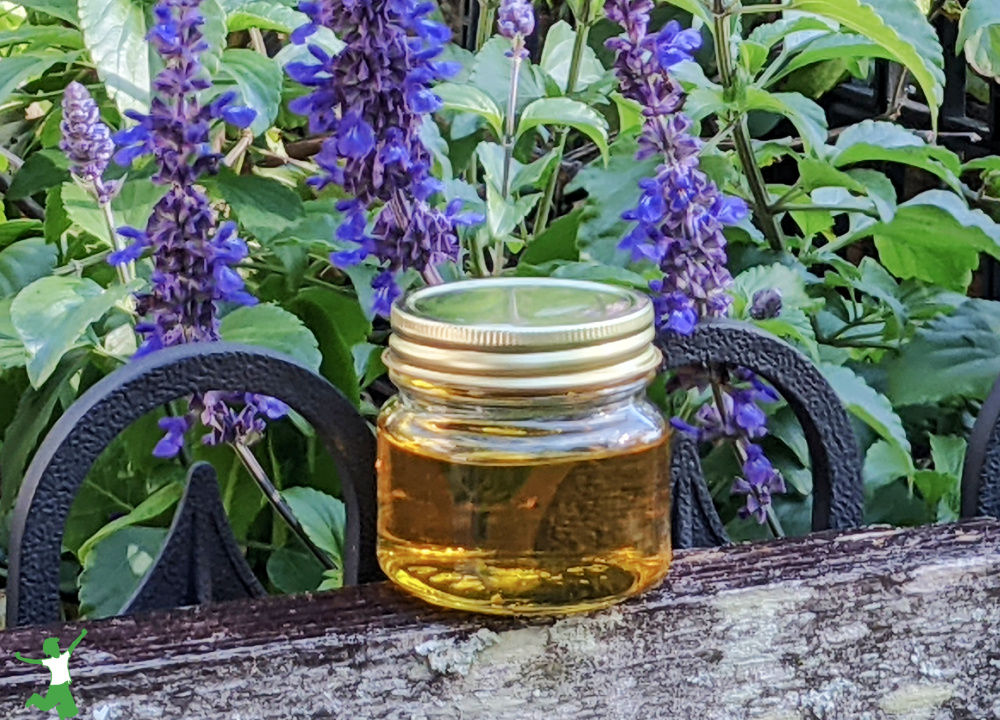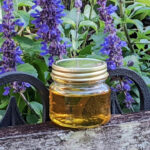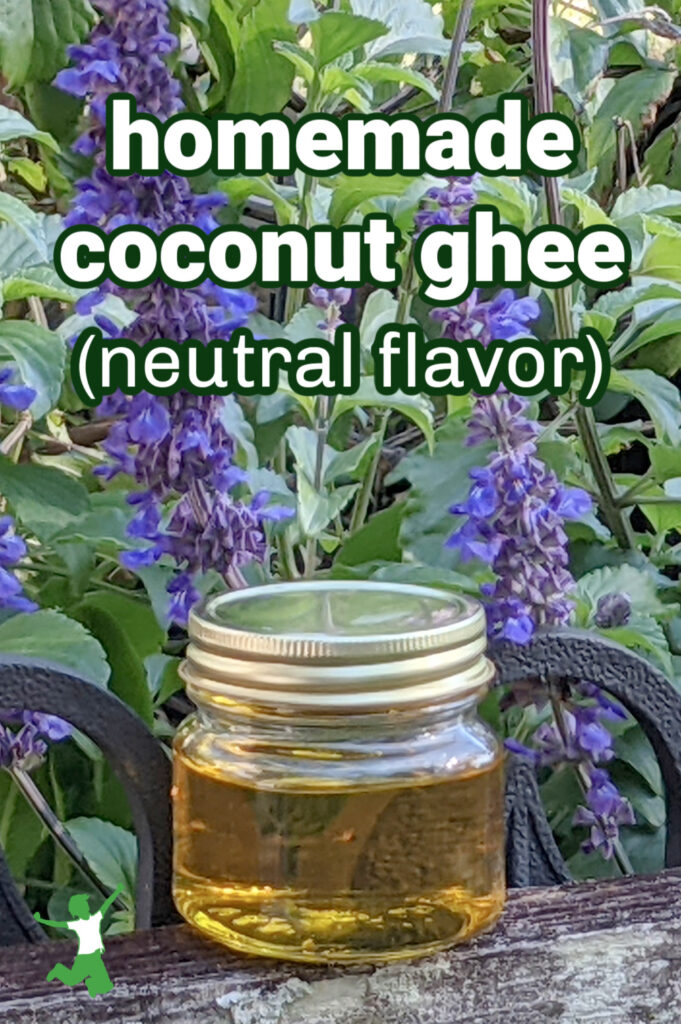Table of Contents[Hide][Show]
How to make homemade coconut ghee loaded with Vitamin K2 that has a neutral flavor, high smokepoint, and low to no allergenicity.

Having tried and used many types of traditional fats for cooking, coconut ghee is definitely one of my all-time favorites.
This particular blend of lipids combines anti-pathogenic fatty acids in butter with anti-microbial powerhouse lauric acid found in abundance in coconut oil into a single cooking fat that is shelf stable.
At the same time, any allergenic proteins in the butter that some may be sensitive to are removed.
This combination of healthy fats is an immune system bonanza! It also has one of the highest smoke points for cooking fats, making it a favorite of mine for all manner of dishes.
Buy or DIY?
I make my own coconut ghee per the recipe below because buying it has one big drawback.
Commercial brands have a slight coconut taste from using virgin coconut oil.
Even though it is mild, my family does not care for the flavor at all. What’s more, I’ve found that it can interfere with the dish that is prepared with it.
Thus, we only use virgin coconut oil for therapeutic reasons in our home.
Instead, I use expeller-pressed coconut oil which has a completely neutral taste. It has no coconut flavor at all, in fact.
Most importantly, the hugely beneficial lauric acid is just as potent and 100% intact in this type of coconut oil.
When combined with clarified butter, the resulting coconut ghee has a neutral to slightly buttery flavor that is not overwhelming such as occurs when using ghee alone.
Give it a try! It’s so easy to make!
Preparation Tips
Quick preparation is possible because you can slightly warm equal parts ghee and expeller coconut oil to a liquid state on the stovetop with no damage to the oils.
Mix together and you’re done!
Even those who have dairy allergies can almost always tolerate it just fine.
One more tip. I recommend sourcing A2 ghee for making this recipe.
Alternatively, make your own A2 ghee from butter you obtain from a local farm (note that you can also make ghee in the oven).
Why A2 Ghee?
A2 ghee is guaranteed to originate from old-fashioned cow breeds such as Jersey, Guernsey, and Devon.
These types of cows thrive on pasture and are not candidates for Big Dairy operations, where modern Holsteins are preferred for their unnatural production capabilities and may be partially confined and fed hay with little access to green, unsprayed pasture.
Surprisingly, this type of operation can still result in a “grassfed ghee” label.
Thus, A2 ghee is a certification of sorts for pasture feeding, which grassfed is not.
No labeling games means more beneficial Vitamin K2 in the ghee, which is a very elusive nutrient in the Western diet. Ghee will maximally contain K2 if the cows are eating fresh, green pasture.
Short of buying butter from a local farm so you can make your own ghee and verify that the herd consists of old-fashioned cows on quality green pasture, sourcing A2 ghee is the next best thing.
Secondly, if tiny amounts of dairy proteins do manage to remain in the A2 ghee as it is clarified from butter, it is the best choice for those that are dairy sensitive.

Homemade Coconut Ghee
How to make homemade coconut ghee with a neutral flavor and low to no allergenicity.
Ingredients
- 1 cup expeller pressed coconut oil
- 1 cup A2 ghee
Instructions
-
Place A2 ghee in a small pan. Do the same for the expeller-pressed coconut oil in a second small pan.
-
Warm the pans on separate burners on low heat on the stovetop until both oils are liquefied (about 3 minutes).
-
Empty the contents of the pans into a one-pint glass jar. Stir with a spoon to gently mix.
-
Let the jar come to room temperature and then screw on the lid.
-
Store homemade coconut ghee in the pantry and use it as neutral taste cooking oil with a very high smokepoint and extremely healthy fatty acid profile.









Leave a Reply